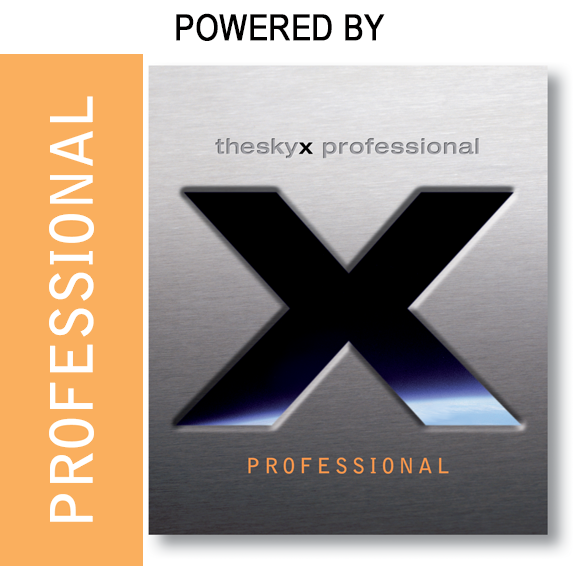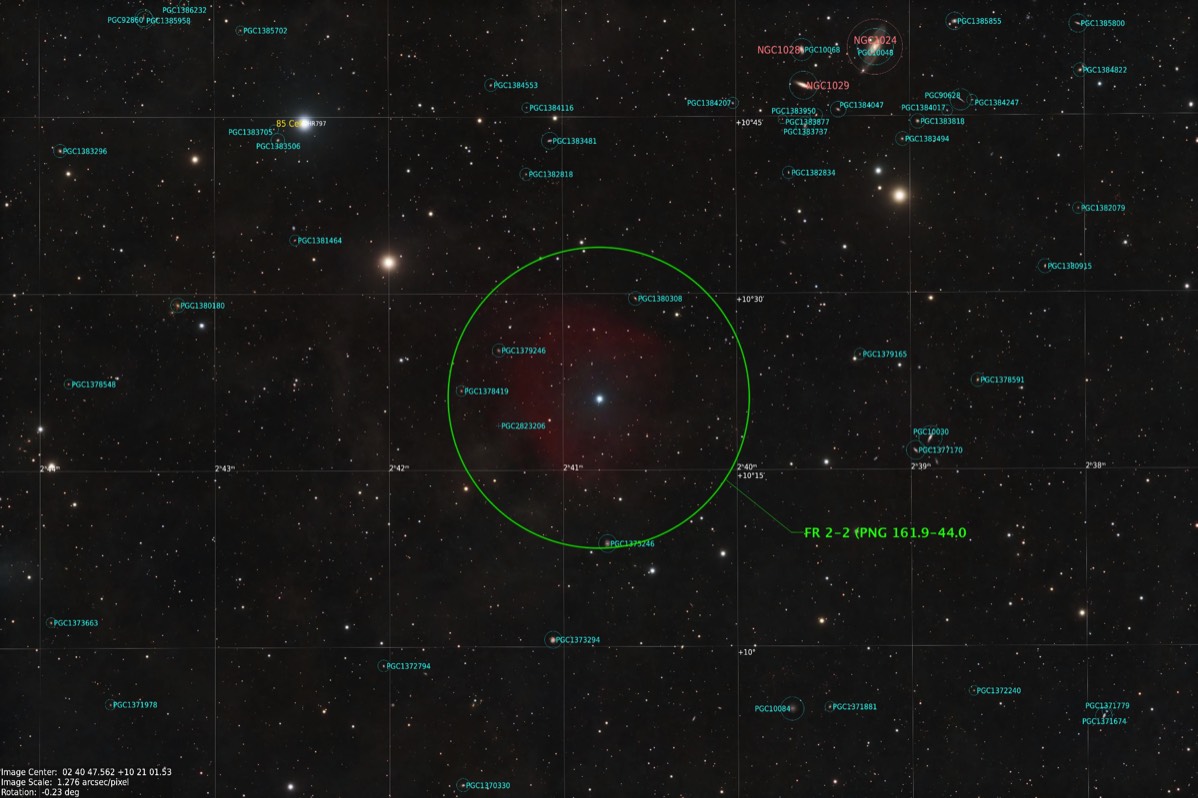Fr 2-2 (PNG 161.9-44.0)
Published 26 Jan 23
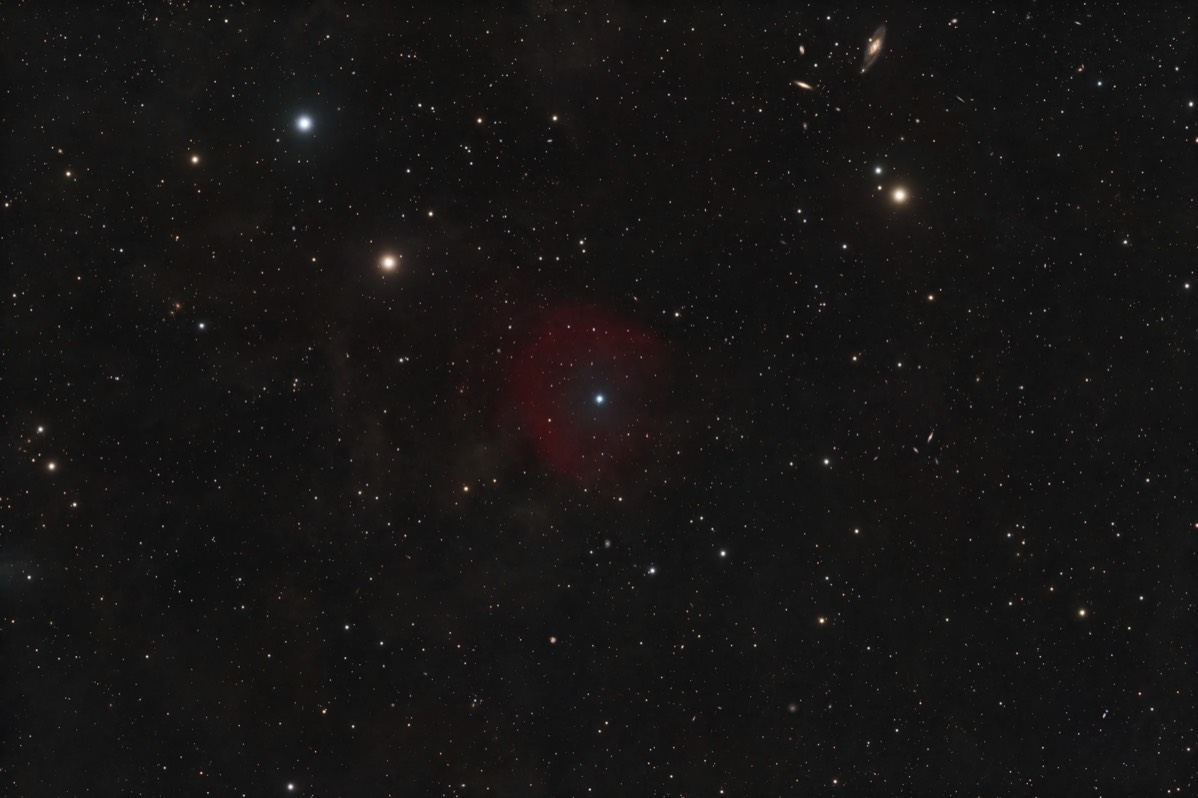
RGB HOO image (35.7 hrs)
Annotated color image
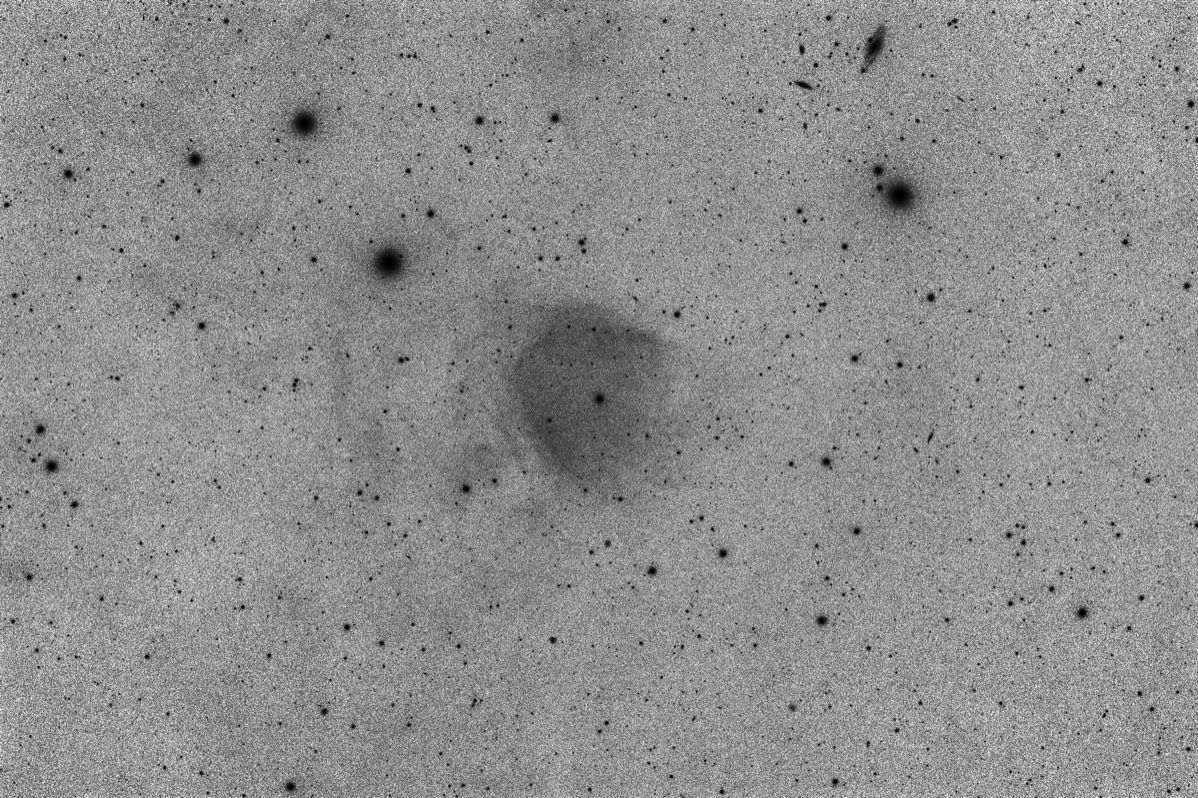
Inverted Ha image (14.6 hrs)
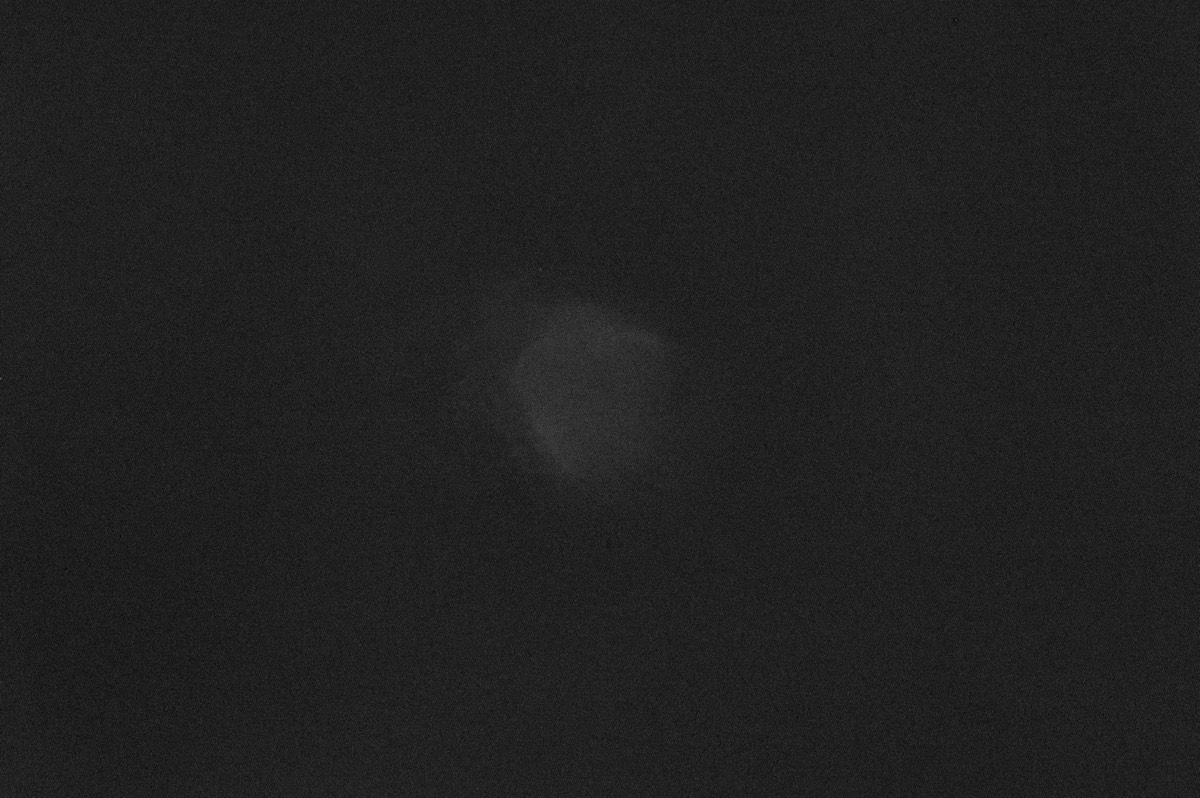
Continuum subtracted and starless Ha image
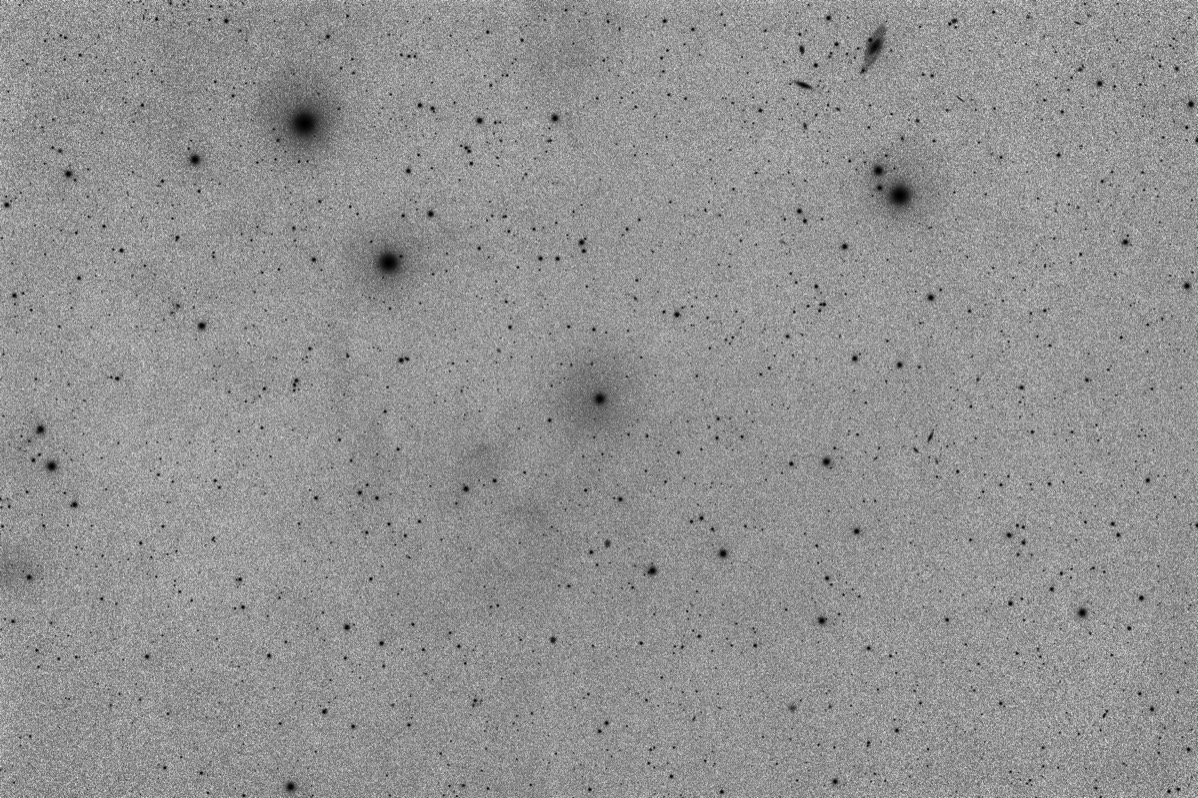
Inverted OIII image (15hrs)
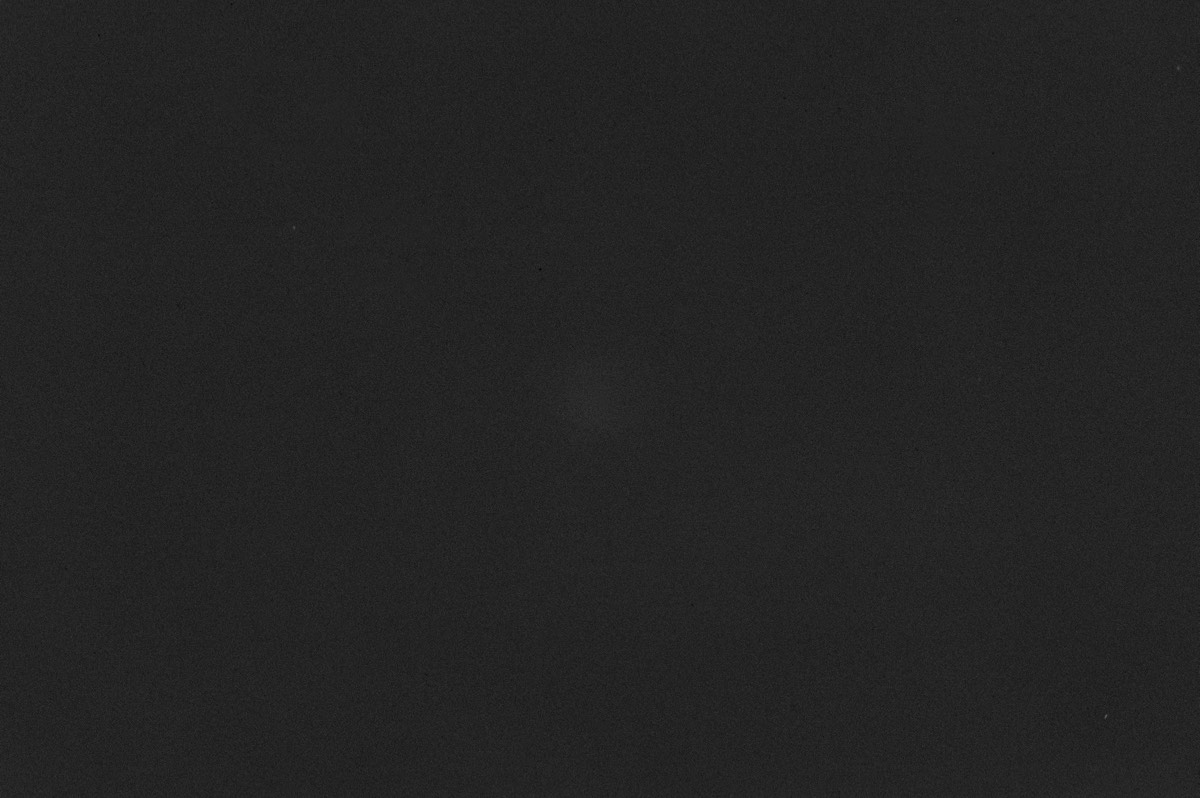
Continuum subtracted and starless OIII image
About this object
Frew (Fr) 2-2 is a potential planetary nebula in the constellation Cetus. This is the first deep color image (RGBHOO), that I know of, of this object. The object was discovered by Dr. David Frew. It's listed in Dr David Frew's July 2008 Doctoral thesis (Planetary Nebula in the Solar Neighborhood: Statistics, Distance Scale and Luminosity Function) and the 2006 International Astronomical Union paper, A Search for New Emission Nebula from the SHASSA and VTSS Surveys. Although it's listed as a potential Planetary Nebula, the literature also mentions it is also possible that this object, is instead, an ionized ISM nebula and that it doesn't seem to have all they typical markers of a planetary nebula. The color RGBHOO image is composed of 2hrs of Red, Green and Blue exposures, 14.7hrs of Ha exposures and 15hrs of OIII exposures through 5nm filters. The area surrounding Fr 2-2 is very dusty with brighter patches off to the left of the nebula and fainter dust throughout the image. The bright star in the center of the nebula is HD 16686, a mag 9.17 AO spectral type star. The brighter part of the nebula is around 830 arc seconds wide with fainter extensions out to 1108 arc seconds. Below the color image is a inverted Ha image and continuum subtracted and starless Ha image showing the emission part of the nebula. Below the Ha images are the same OIII images. The continuum subtracted and starless OIII image shows only a very faint hint of OIII emission.
There are several fairly bright NGC galaxies in the upper right of the image along with many fainter PGC galaxies. The brightest of these is NGC 1024. These can be seen on the annotated image.
Frew (Fr) 2-2 is a potential planetary nebula in the constellation Cetus. This is the first deep color image (RGBHOO), that I know of, of this object. The object was discovered by Dr. David Frew. It's listed in Dr David Frew's July 2008 Doctoral thesis (Planetary Nebula in the Solar Neighborhood: Statistics, Distance Scale and Luminosity Function) and the 2006 International Astronomical Union paper, A Search for New Emission Nebula from the SHASSA and VTSS Surveys. Although it's listed as a potential Planetary Nebula, the literature also mentions it is also possible that this object, is instead, an ionized ISM nebula and that it doesn't seem to have all they typical markers of a planetary nebula. The color RGBHOO image is composed of 2hrs of Red, Green and Blue exposures, 14.7hrs of Ha exposures and 15hrs of OIII exposures through 5nm filters. The area surrounding Fr 2-2 is very dusty with brighter patches off to the left of the nebula and fainter dust throughout the image. The bright star in the center of the nebula is HD 16686, a mag 9.17 AO spectral type star. The brighter part of the nebula is around 830 arc seconds wide with fainter extensions out to 1108 arc seconds. Below the color image is a inverted Ha image and continuum subtracted and starless Ha image showing the emission part of the nebula. Below the Ha images are the same OIII images. The continuum subtracted and starless OIII image shows only a very faint hint of OIII emission.
There are several fairly bright NGC galaxies in the upper right of the image along with many fainter PGC galaxies. The brightest of these is NGC 1024. These can be seen on the annotated image.
Image Details
- Optics : Stellarvue SVX 152T refractor @f8 1200mm FL
- Mount: Paramount MYT
- Camera: ZWO ASI6200
- Filters: Chroma 50mm RGB, 5nm OIII, Astrodon 50mm 5nm Ha
- Exposure (min): RGBHaOIII 120:120:120:880:900, 35.7 hrs, 2x2 binning
- Automation Control: The Sky X, Voyager, PrimaluceLab Eagle 4
- Guiding: StarlightXpress Lodestar X2
- Processing Software: PixInsight, PS CC
- Location: Stark Bayou Observatory, Ocean Springs, MS
- Sky: Typical SQM 19.6-20.1, Bortle 5, Suburban
- Date: 30 August 22 - 29 December 22
